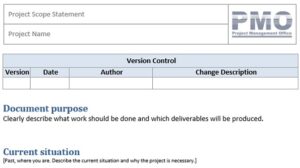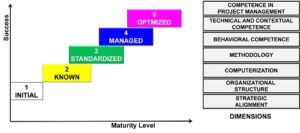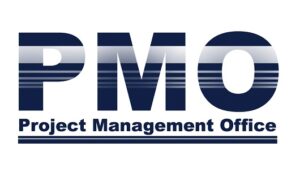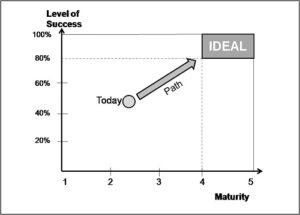Understanding Project Management: Beginner Guide
The objective of “Understanding Project Management: Beginner Guide” is to provide a clear and accessible introduction to the core principles and concepts of project management. This article is designed for individuals new to the field, aiming to demystify what project management entails, why it is essential, and how it applies across various industries. It will cover foundational topics such as defining a project, the role of a project manager, and the importance of structured methodologies to achieve goals effectively. By the end, readers will have a solid understanding of the basics and feel prepared to explore deeper aspects of project management.
Intro to Project Management
In today’s fast-paced world, project management is more crucial than ever. It involves planning, executing, and closing projects efficiently to achieve specific goals and meet success criteria within a specified time.
Its significance spans across various industries such as technology, construction, healthcare, and more. Effective project management ensures that projects are delivered on time, within budget, and to the desired quality standards, making it an invaluable skill in any sector.
The evolution of project management has been remarkable. From traditional approaches to modern methodologies, it has evolved to incorporate flexibility, adaptability, and collaboration. This progression highlights its dynamic nature, continually adapting to meet the demands of contemporary work environments.
What is a Project?
A project is a temporary endeavor undertaken to create a unique product, service, or result. Unlike ongoing operations, projects have a defined beginning and end. They are aimed at achieving specific objectives.
Key characteristics that define a project include:
- Clear objectives
- Defined timeframe
- Allocated resources
- Unique deliverables
Projects can vary significantly across different sectors. In the tech industry, developing a new software application is a common project. In construction, building a bridge or a skyscraper serves as an example. Meanwhile, organizing a major event, such as a conference, can be a project within the events management sector. Each of these examples highlights how projects are designed to meet specific goals, using distinct strategies and resources based on the industry requirements.
Project Lifecycle Explained
Understanding the project lifecycle is crucial for successful project management. It consists of distinct stages, each with specific objectives that ensure a project’s progress from start to finish.
Initiation
This stage involves defining the project at a high level. Key actions include identifying stakeholders and setting goals. It’s the foundation upon which the project is built.
Planning
Detailed planning is essential. This stage outlines the scope, timeline, and resources required. Planning sets the path and direction for achieving the project’s objectives.
Execution
In this phase, the project plan is put into action. Teams work on deliverables, and resources are utilized. Effective execution is vital for producing desired outcomes.
Monitoring and Controlling
This stage involves tracking progress and performance. It ensures that the project stays on course and any deviations are corrected promptly.
Closure
The final stage wraps up the project. Deliverables are handed over, and a thorough evaluation is conducted to glean lessons learned.
| Stage | Key Actions |
|---|---|
| Initiation | Define project, identify stakeholders |
| Planning | Outline scope, timeline, resources |
| Execution | Implement plan, manage resources |
| Monitoring and Controlling | Track progress, make adjustments |
| Closure | Finalize project, evaluate outcomes |
Each stage is interconnected, creating a fluid process that ensures the project remains aligned with its goals. As we delve into more detailed aspects of project management in the upcoming articles, understanding these stages will be fundamental.
Core Elements of Project Management
Scope, Time, and Cost
These three elements form the project management triangle, crucial for balancing any project. Scope defines what needs to be done, time dictates the schedule, and cost involves budgeting. For instance, building a new website requires clear scope definition, a timeline for launches, and cost assessments for resources.
Quality and Risk Management
Ensuring quality means meeting project requirements and standards. Quality management involves processes to maintain this standard. Meanwhile, risk management identifies potential challenges before they impact the project. For example, in manufacturing, quality checks prevent defects, while risk assessments guard against supply chain disruptions.
Stakeholder and Communication Management
Projects rely on effective stakeholder management to align interests and expectations. Communication management ensures information flows smoothly among all parties involved. Consider a marketing campaign: engaging stakeholders like clients and agencies, and maintaining clear communication, is essential for success.
Mastering these core elements lays the groundwork for effective project management, setting the stage for exploring methodologies and tools in the upcoming sections.
Popular Project Management Methodologies
Waterfall
The Waterfall methodology is a traditional approach where projects flow sequentially through stages. It’s ideal for projects with fixed requirements and clear objectives. A PMI study shows that approximately 51% of projects still use Waterfall, especially in industries like construction and manufacturing.
Agile
Agile is a flexible methodology emphasizing iterative progress and collaboration. It adapts well to changing project requirements, making it popular in software development. According to the 15th State of Agile report, 94% of organizations practice Agile, highlighting its widespread adoption.
Scrum
Scrum is a subset of Agile, focusing on delivering work in short cycles called sprints. It encourages team collaboration and frequent feedback. A Scrum Alliance survey found that 81% of Agile adopters use Scrum, showcasing its prevalence in iterative project management.
Kanban
Kanban is a visual methodology that uses boards to track project progress in real-time. It allows for continuous delivery without overloading team members. Kanban is gaining traction, with over 20% of Agile teams incorporating it into their workflows, as reported by the Lean Kanban University.
Each methodology offers unique benefits, enabling teams to choose the best approach for their project needs. As we explore further, understanding these methodologies will be crucial.
Essential Project Management Tools
To successfully steer a project from inception to completion, utilizing the right project management tools is crucial. These tools assist in planning, tracking, collaboration, and budget management, ensuring that teams stay on target and within budget.
Software for Planning and Tracking: Tools like Microsoft Project and Asana are popular for their comprehensive tracking capabilities. According to Capterra, 67% of project managers utilize software for planning to enhance visibility and control over their projects.
Collaboration Tools: Platforms such as Slack and Trello facilitate seamless communication and collaboration among team members. A survey by McKinsey highlights that these tools can boost team productivity by up to 25%, thanks to their real-time interaction features.
Budget Management Tools: Managing finances is vital, and tools like QuickBooks and FreshBooks offer robust solutions for tracking expenses and budgeting. A study from the Project Management Institute found that 80% of projects using budget management tools are more likely to be completed on budget.
These tools are indispensable for modern project managers, enabling them to streamline processes and improve overall efficiency. In the next section, we’ll delve into common challenges faced in project management and how to overcome them.
FAQs on Project Management
Diving into project management can raise several questions, especially for beginners. Here are answers to some of the most common queries:
- What skills are needed for project management? Project managers need a blend of both hard and soft skills. Key skills include communication, leadership, time management, problem-solving, and a strong understanding of project management tools and methodologies.
- How do I become a project manager? Start by gaining relevant experience in your industry and enhancing your skills. Pursuing a certification, like PMP (Project Management Professional) or CAPM (Certified Associate in Project Management), can also significantly boost your credentials.
- What are common project management challenges? Projects often face challenges such as scope creep, budget constraints, time management issues, and stakeholder communication. Effective planning and proactive risk management are essential to navigate these hurdles.
Understanding these aspects lays a solid foundation for a successful project management career. As you continue to explore this field, stay tuned for the next articles that will delve deeper into advanced topics and methodologies.
Conclusion and Next Steps
In this beginner’s guide, we’ve explored the fundamentals of project management, including its definition, importance across industries, and core elements like scope, time, and cost. Understanding the project lifecycle and popular methodologies sets the stage for effectively managing any project.
As we continue this series, upcoming articles will delve into advanced topics, such as in-depth explorations of methodologies like Agile and Scrum, and tackling real-world challenges. Each article is designed to build on what you’ve learned here, providing a comprehensive understanding by the end.
Now is the time to begin applying these concepts in your projects. Stay tuned for the next installment, and take the first step towards becoming a proficient project manager. Your journey is just beginning!





